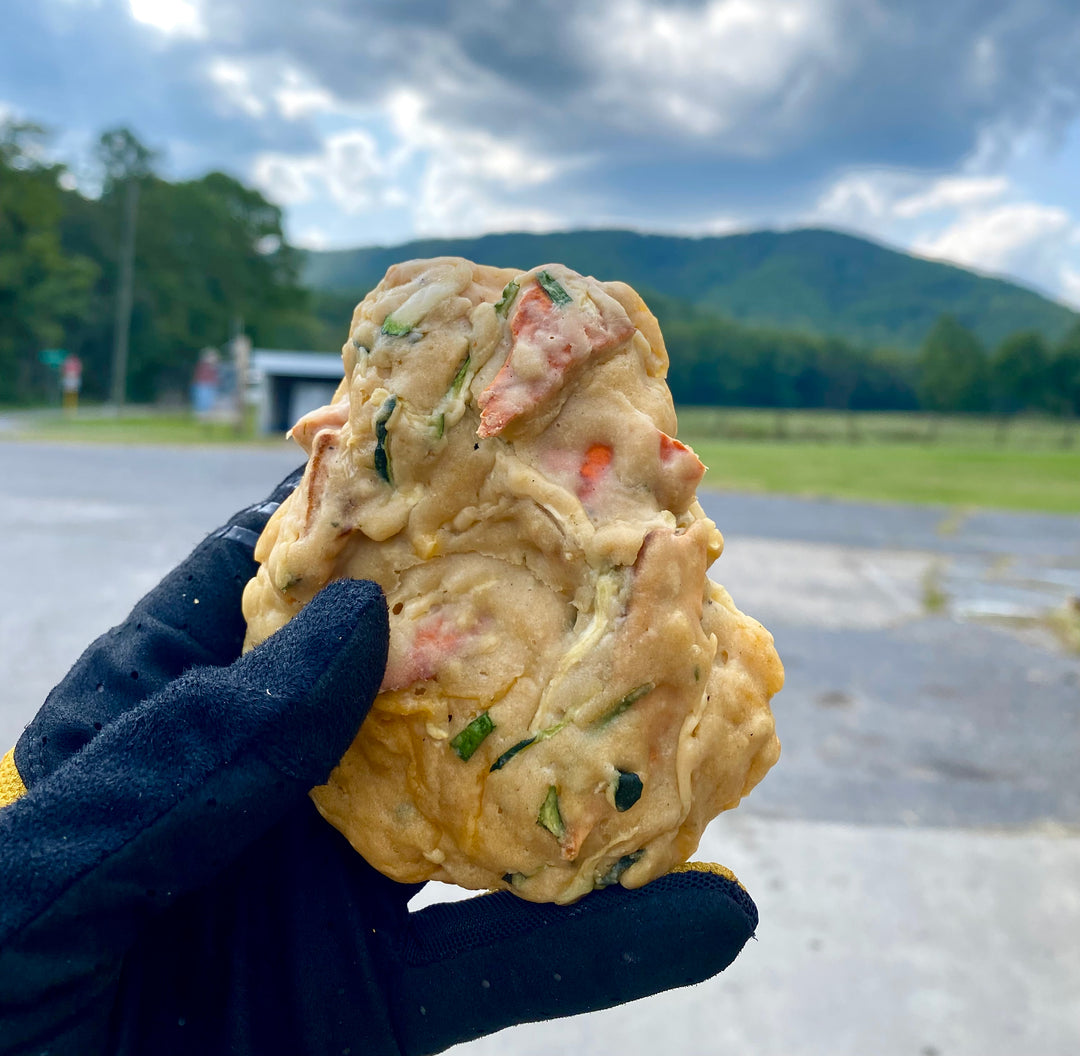Guide To Real Food Eating


What does a “real food diet” really mean? Spring Energy is known for its standard of real food ingredients to fuel our bodies during both rambling adventures and the hardest efforts. Real food ingredients, of course, are food that come directly from nature, unrefined, keeping all their inherent nutrition intact from macronutrients (like fiber) to micronutrients (such as vitamin C and antioxidants). Eating real foods is just as important beyond the training session in order to optimally fuel and nourish our bodies, keeping us going for the long haul. Eating healthfully does not need to be overly complicated, as long as one has some foundational guidelines. Here is my compiled list of staple principles. If you implement these, you will be eating pretty darn well. You will likely feel pretty darn good too!
1. Eat for steady blood sugar- Keeping steady blood sugar is crucial for steady energy levels, proper brain function, and disease prevention. Blood sugar problems can result in diabetes, obesity, hyperactivity, and is even a high risk factor in heart disease. Refined carbs and sugar itself spike blood sugar, inducing an overload of insulin (the helper molecule to bring glucose into cells), faster than the cells can use. Excess sugar and insulin in the blood stream cause damage to arterial walls, inflammation, and more. Further, excess sugar and refined carbs are turned into fat, or triglycerides, in the liver and is then stored as fat throughout the body.
- Remove or limit refined sugar and refined carbs in the diet. An occasional sweet or treat is wonderful, but these should not be an overwhelming part of the diet as they have damaging effects over time.
- For referencing specific foods, use Glycemic Load as it is actually more relevant than Glycemic Index. GI refers to how a set amount of carbohydrates in a food affects your blood sugar, but GL takes into account how many carbohydrates are actually in a food or serving one would actually eat, being a more functional number. For example, do not be frightened by watermelon's GI of 80. It's GL is only 5!
- You hear it all the time, but what does it actually mean? We can dive in a later post into the depths of good versus bad fats, but the jist is that many of the fats prolific in the Standard American Diet are highly processed, oxidized (or rancid), and therefore highly inflammatory to the body and truly wrecking havoc. These bad fats include highly refined vegetable oils that are prolific in the processed food industry and often used in restaurants: margarine and partially hydrogenated oils (the worst, containing trans fats), vegetable oil, canola oil, soy oil, corn oil, safflower oil, sunflower oil, and more. The polyunsaturated fats in these oils are very delicate and prone to oxidation (inflammatory to the body and produce free radicals). The intense processing of commercial oils includes extremely high temperatures and pressure, bleaching agents, and chemical emulsifiers. These oils are then exposed to further damage during food processing such as frying.
- All of these refined vegetable oils mentioned above are extremely high in Omega-6s. Omega 6 is an essential fatty acid, however, it must be balanced in a proper ratio by Omega-3s. Otherwise it creates a highly inflammatory response in the body.
- Conventionally raised meats, eggs, and dairy contain unnaturally high levels of Omega-6s as well since they are fed unnatural grain, corn, and soy diets instead of lush green grass, alfalfa, and insects. Essentially, an unhealthy diet for an animal creates an unhealthy food when we consume it.
- Choose good fats: organically raised or wild animal products, extra virgin olive oil, unrefined coconut oil, grass fed butter, ghee, nuts, seeds, avocado, and coconut. Treat these fats with care, choose quality products, and avoid high temperatures/smoking in order to keep them well intact.
- This is a way of saying eat as many plants as possible! Diversity, though, is key. Plants do not only include vitamins, minerals, and fiber, but they are full of phytonutrients. Phytonutrients are by name “plant” compounds (or nutrients) with brilliant properties for the body, such as chlorophylls, bioflavonoids, carotenoids. There are over 25,000 phytonutrients and they are what give plants their radiant colors, unique flavors, and distinct aromas. Different classes of phytonutrients all do different things in the body, for example, having antioxidant and anti-inflammatory effects. They assist other nutrients, hormones, and enzymes and support biological functions throughout the body. They are not considered necessary to life as are vitamins, however, they have huge health promoting and disease preventing (or reversing) properties. This is the reason for the “rainbow” prescription for healthy eating. By eating a wide array of plant foods we are getting nature's beautiful balance of nutrients available. Give in to your instinct for bright colors and reach for the bright berries, sunny sweet potatoes, blushing beets, and darkest chocolate. Often, the darker or richer the color, the more phytonutrients the plant food contains. For example, orange sweet potatoes have more phytonutrient power than the pale variety and purple cabbage has more punch than green, although green cabbage still has its own benefits.
- Artificially colored cereals, popsicles, fruit snacks, and candy are trying to tap into our natural attraction towards colorful foods, but these processed foods are lacking in any superpowers. They do quite the opposite actually as they stress the body (see Number 5).
- Antioxidants combat oxidative damage, especially important for athletes who induce high amounts of oxidative stress through exercise. (The Standard American Diet also creates oxidative stress from “bad fats”, chemicals/toxins, and sugars.) Beyond recovery from training, antioxidants are constantly working in the body. For example, flavonoids promote healing and protect the structure of blood capillaries while carotenoids enhance the immune system, are converted into Vitamin A, create radiating skin, and are necessary for eye health.
- These days, it can be a challenge to eat healthfully without making your own food at home. This is not to say it can’t be done, but most restaurants cook with the cheap, unhealthy vegetable oils we talked about in Number 2 and add excess sugar and/or salt for memorable flavor. Restaurants most commonly use conventional, low-quality animal products unless they make a prideful point in doing otherwise. Farm to table and organic restaurants are best options. The pre-packaged food industry is obviously booming, but these foods whether frozen entrees or individually wrapped snacks are the most common culprits of health deteriorating fats, sugars, artificial food additives, and preservatives. These convenience foods can have a place in the diet, however, buy your snacks at natural food stores and make it a habit to read the ingredient list (see more in Number 5).
- Cooking nourishing food for yourself and your loved one(s) is an extraordinary labor of love. Cooking is something humans have done since the beginning of our evolution. It does not have to be a chore but an exciting time to try new recipes, new foods, or comfy classics while slowing down, being present, and spending time with others. Food is medicine but also culture, creativity, delicacy, and celebration. Once you embrace spending a little more time in the kitchen I promise you will find it to be fun, rewarding, and satisfying. Warning: you may develop high standards for quality and an elevated taste palate for real foods such that poor quality and “frankenfoods” have no appeal to you anymore. Perhaps, it gets your creative juices flowing and you find yourself saying, “I can make that!” when eyeing the hummus or chocolate chip cookies at the store.
- Do not feel like you must make your own food 100 percent of the time or not try at all. Small steps and tilting the ratio of cooking more while eating out less will do wonders for your health. Perhaps invite your friends over for dinner rather than eating out at your regular restaurant.

5. Reduce toxic exposure
- Toxic load refers to the total amount of toxins one is exposed to that have a harmful effect on the body. Toxins inhibit proper functioning, deplete nutrient stores, and damage the body’s detoxification processes. These all set the stage for inflammation to fester and can contribute to the development of chronic disease. Toxins in foods include pesticides, herbicides, and fungicides from conventional produce; antibiotics and hormones in conventionally raised animals; chemicals and artificial food additives such as food dyes, bleaches, and preservatives from highly processed foods and meats; heavy metals in some seafood. Toxins accumulate in adipose fat, remaining a toxic source inside the body and ultimately wreaking havoc when not combated by antioxidants or the body’s detoxification systems.
- Buying organic, especially the Dirty Dozen list put out by the Environmental Working Group will reduce pesticide exposure. Eating grass fed or pasture raised organic animal products will avoid toxins of the meat industry. Reading ingredient labels and avoiding listings with numbers (sign of lab-made chemicals), nitrates/nitrites, parabens, phosphates, diacetyl, artificial colors and flavors, potassium bromate, BHA/BHT, and aluminum is a good place to start. These are noted by the EWG as being endocrine disruptors, neurotoxins, known carcinogens, or linked to multiple diseases.
Written by Kelly Wolf; Certified Holistic Nutrition Candidate, Ultrarunner, and Inspirator of the Spring Energy WolfPack















Leave a comment